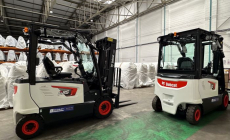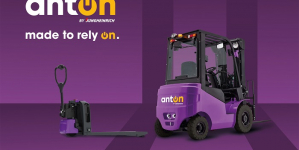-
QUECLINK NAMED LEADING TELEMATICS HARDWARE PROVIDER AFTER YEAR OF GROWTH AND INNOVATION - January 9, 2026
-
Women Leading the Way in the UK Material Handling Industry - December 12, 2025
-
LiftEx 2025 live from Liverpool - December 11, 2025
-
DATA ANALYSIS – THE FOUNDATION OF EVERY PEAK SEASON - December 5, 2025
-
Creative education specialists Creative Hut give 3PL full marks for onboarding excellence - December 5, 2025
-
Unlimited Industries raises $12M to build the AI construction company that will power America’s future - December 4, 2025
-
Scottish Leather Group gets full-support solution from Rushlift - December 4, 2025
-
Etaily lands strategic investment from Japan’s SMBC – bringing total funding to $24M for Social Commerce enablement platform - December 4, 2025
-
Winners lift their LEEA Awards and raise the industry - December 4, 2025
-
Prism eLogistics and Brand Angels Partnership Gives Brands the Full Package - December 3, 2025
Mentor: stop falls by following the three-points-of-contact rule.
Mentor FLT Training is urging fork lift truck operators and those responsible for site safety to take care when mounting and dismounting lift trucks by following one simple rule: keep three-points-of-contact.
Falls, slips and trips account for over a third of all UK workplace injuries, with lift truck drivers and warehouse staff ranking highly among them. Every year, falls from stationary and moving lift trucks seriously injure – or worse – approximately 40 workers in the UK.
But applying the ‘three-points-of-contact’ rule will limit the risk of injury. It simply states that when entering or exiting a truck, you should maintain three points of contact until you are either in your seat or standing firmly on the ground. This means one hand and two feet or two hands and one foot at all times.
Best practice for mounting and dismounting a forklift truck is as follows:
• Mount/dismount only when the truck is stationary
• Face the truck
• Use the handgrips and steps provided
• Look all around for hazards
• Get on and off the truck under control and one foot at a time
• Do not jump
• Take extra care in rain, snow, or icy conditions
It’s best practice for good reason…
Not only does dismounting incorrectly put you at risk of a simple slip or fall, the consequences could be far more serious, as Mentor’s Technical Manager, Andy Cartwright explains: “Jumping from a lift truck is likely to put more distance between you and your truck and do so far quicker than simply stepping down, and could put you suddenly and unexpectedly in the path of another vehicle.”
By facing the truck to mount and dismount and maintaining three-points-of-contact, you can better protect yourself should you end up in harm’s way. With at least one hand and foot on the truck at all times you will have the ability to pull yourself into the truck’s cab and out of danger should a passing vehicle or obstruction come too close.
“It may sound like common sense, but when you see the number of injuries caused by slips and falls then it’s something worth emphasising. It’s simple advice and very easy to apply so if fork lift users keep it in mind when working, hopefully, we’ll start to see a reduction in falls from forklifts.” www.mentorflttraining.co.uk

































